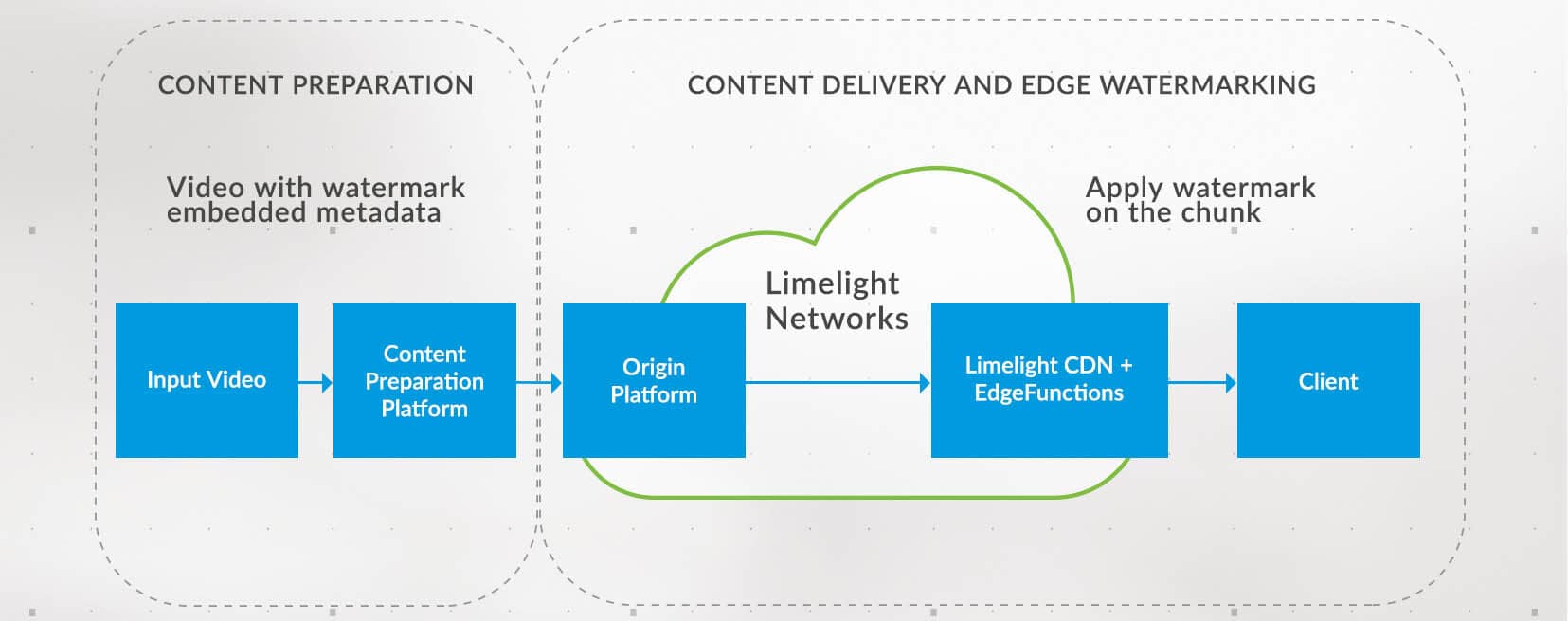
Protect Online Content With Forensic Watermarking At The CDN Edge
Original source: Limelight Networks
As streaming has become a dominant form of video consumption, content piracy has increased in volume and scope. Content protection and solutions for anti-piracy go hand in hand as part of a holistic approach that needs to encompass the security of content as it is delivered, controls over access to content and the ability to trace the source of unauthorized streams.
As more video has moved online, the threat of reputation and revenue theft has increased. The stakes are higher, too as premium content goes online — first-run films released through streaming services as theaters are impacted by the pandemic, high-profile live sporting events, and new premium subscription services are just a few examples.
Here’s where forensic watermarking comes into play. It allows content owners and providers to uniquely identify the source of pirated streams with no visible impact on viewers. Now when videos are distributed in unauthorized channels and services, they can be traced back to the last authorized recipient. Invisible watermarks unique to each subscriber are embedded into the streams. If an asset is shared illegally, the content owner can identify the account that was the source of the piracy and shut it down.
In fact, the pandemic has accelerated the move to online delivery of all types of content today – making the need to protect your assets and services more important than ever. But how and where do you implement the right technology to help you stay ahead of the risks?
Since the Content Delivery Network (CDN) edge is where individual consumer streaming sessions are delivered from, it’s a logical place to run vital forensic watermarking piracy mitigation functions. The ideal infrastructure deploys distributed serverless computing resources and integrates them with delivery services at multiple locations at the edges of a CDN. In this scenario, forensic watermarking can be applied seamlessly as part of video delivery at the network edge close to the viewer, minimizing latency while maximizing the ability to protect content at scale.
Content providers have various options to secure digitally streamed content and events at the edge. Watermarking can take place at multiple points in the distribution chain. Server-side watermarking occurs as the stream is delivered to the end-user and can be placed within adaptive bitrate streaming content. The watermarking logic can be done during the delivery of the content to each end user and is done securely on the server side, making it unchangeable and secure from man-in-the-middle attacks. Performing watermarking for individual streams at the point of delivery is well-suited to live and on-demand streaming scenarios.

In a typical workflow, forensic watermarking includes a content preparation stage and an individual watermarking stage. In this representative diagram, the content preparation stage takes input video, applies invisible watermarking or information, and transfers the assets to a delivery origin. Then in the Delivery and Edge Watermarking stage, a uniquely identifiable watermark pattern is created on a per-session basis using the watermarked assets.
The combination of Limelight’s EdgeFunctions serverless compute platform and CDN services, along with third-party watermarking solutions, form an ideal solution to create and deliver high-quality video streams that are uniquely watermarked. EdgeFunctions is tightly integrated with the CDN to seamlessly execute watermarking and delivery at the network edge close to the viewer. Watermarking solution providers may offer a range of approaches to watermarking that are variations on the basic approach described above. One approach is known as A-B watermarking. A and B versions of each chunk are created in the preparation stage. In the delivery stage, the CDN edge server redirects chunk requests to deliver either version A or version B of each requested chunk to the player. Each user is delivered a unique sequence of A and B video chunks encoding a watermark identifier for tracing purposes.
Another approach involves modifying the body of the response sent by the edge. It allows content providers to modify the encoded video stream in an OTT ABR (adaptive bit rate) video delivery system.
To address best practices for watermarking and service protection at the edge, Limelight recently hosted a webinar that highlights real-life examples of how to combine CDN and Edge compute to futureproof your organization.

Explore Edgio Solutions
Get the information you need. When you’re ready, chat with us, get an assessment or start your free trial.